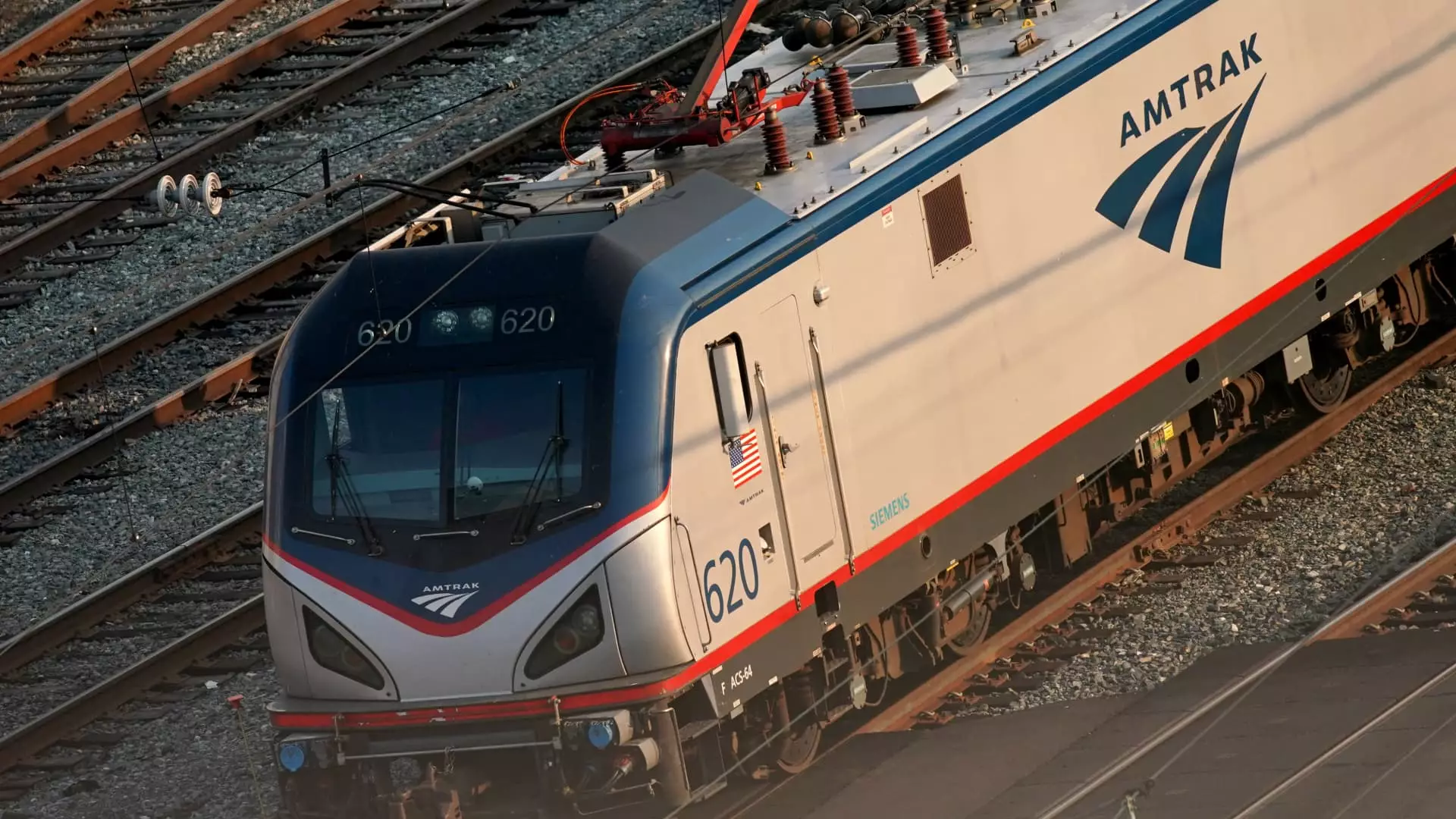As the world slowly emerges from the pandemic, domestic travel is experiencing a rebound. However, with soaring prices and uncertainty in the airline industry, many travelers are now considering trains as a viable alternative to planes. This shift in preference can be attributed to several factors, including cost-effectiveness, more legroom, and the environmental benefits of train travel. Amtrak, the government-backed U.S. rail service, is capitalizing on these advantages as it strives to revive its pre-pandemic ridership and improve its overall operations.
While train routes may take longer than flights in terms of actual travel time, the convenience and efficiency they offer often compensate for the additional hours. According to Clint Henderson, a managing editor at travel site The Points Guy, the total travel time on trains tends to even out when considering factors such as traffic to the airport, security lines, and boarding wait times. In certain cases, train travel can even be comparable to flying, especially in the Northeast corridor where flying between nearby cities may not be the most practical option.
One of the major advantages of train travel is the location of train stations. Unlike airports, which are often situated on the outskirts of towns, train stations are typically found in city centers. This accessibility makes train travel more convenient and appealing to many passengers. Leonor Grave, a frequent traveler between New York City and Washington, D.C., expresses her preference for trains due to the frictionless experience they provide. She appreciates the ability to move around, stretch her legs, enjoy the food car, and arrive at the train station just minutes before departure. Grave acknowledges that there is room for improvement in Amtrak’s services but believes that train travel has the potential to connect more places and create an exciting future for transportation.
While trains in the United States are not yet on par with the high-speed rail networks of Europe and Japan, they still offer significant environmental advantages over air travel. The International Air Transport Association reports that air travel contributes approximately 2% of the world’s global carbon emissions. By substituting air travel with train travel, these emissions can be greatly reduced. Aaron McCall, the federal advocacy coordinator at California Environmental Voters, highlights the positive impact of communal travel on lowering emissions. As green technology and public transportation continue to receive investment, the decrease in greenhouse gas emissions remains a promising trend. McCall observes an increase in Amtrak passengers in California, despite the region’s lagging public transportation network.
Amtrak has seen a surge in ridership since the pandemic, with a 24% increase in 2023 compared to the previous year. However, total ridership is still significantly lower than pre-pandemic levels. The Northeast Corridor, spanning from Washington, D.C., to Boston, experienced the strongest rebound, with a more than 22% increase in ridership and revenue. While Amtrak’s on-time performance suffered during the pandemic due to disruptions caused by host railroads, the company remains committed to reliability and safety. Efforts are underway to decrease disruptions, and Amtrak continues to monitor weather conditions and assess infrastructure in real-time.
Amtrak is investing in the expansion and enhancement of its train network. With funding from the White House, the company aims to upgrade trains, improve infrastructure between cities, and double its ridership by 2040. The key game-changer in revolutionizing train travel lies in enhanced train stations, tunnels, and bridges. These upgrades will allow trains to run faster and provide a more efficient travel experience. While the timeline for these improvements may be long, the vision of a transformed train travel landscape is an exciting prospect for both travelers and industry experts.
As domestic travel undergoes a recovery phase, train travel is gaining popularity among travelers. The cost-effectiveness, comfort, accessibility, and environmental benefits of trains make them an attractive alternative to planes in certain situations. While Amtrak still has room for improvement, the company is actively working towards enhancing its services and expanding its network. The future of train travel holds promise as more people embrace the advantages it offers. With ongoing investments and improvements, trains have the potential to play a significant role in shaping the future of transportation.


Leave a Reply